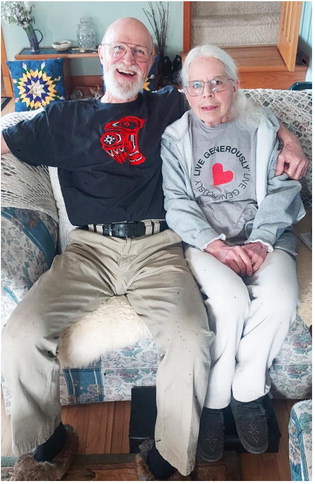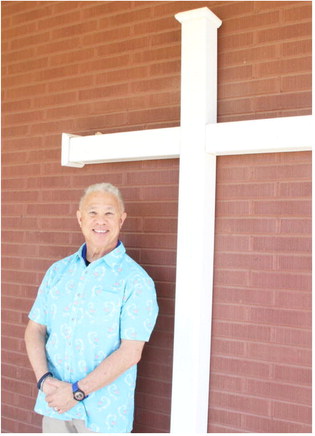MSU Extension Has Legacy Learning Opportunities For Farm And Ranch Families
If you missed the legacy planning presentation during the February 2024 Montana Farmers Union Women’s Conferences held in Miles City and Fairmont Hot Springs, you will be glad to know MSU Extension has a variety of ways you can receive the information. All methods allow you to learn about legacy planning at your own pace 24/7.
Whether your favorite learning method is reading or viewing, MSU Extension has the approach that works best for you.
First, MSU Extension has a website with more than 50 estate planning MontGuides: https:www.montana.edu/estateplanning/ eppublications. html. Scroll down the list to find those of specific interest to you. Read online or print them out so you can highlight information applying to you and your family. The most requested MontGuides are Wills, Getting Started with Estate Planning, Who Gets Grandma’s Yellow Pie Plate, Nonprobate Transfers, and Power of Attorney (Financial).
The majority of the Mont-Guides are specific to the laws of Montana, and present an opportunity to learn individually or as a group. A group could even select a bunch of MontGuides as a “book” for a future book club meeting. Then I could be “present” through Webex to add to the discussion and respond to questions not answered in the MontGuides as a fun way to learn together!
One common misconception I have found during my presentations is people think they can will away their property held in joint tenancy to someone other than the surviving joint tenant. Let’s say a rancher with two children remarries without a premarital agreement. Lacking legal advice, he places the ranch in joint tenancy with right of survivorship with his new wife.
Later, he writes a will with a provision leaving the property to his two children. By placing the property in joint tenancy with his new wife he has disinherited his two children. A will cannot undo the joint tenancy contract. She inherits the property. Assume she is killed in an accident. The property she inherited passes to her children. The rancher has unintentionally disinherited his children.
He needs to get his property back in his name as sole owner. An attorney could explain the benefits of a QTIP trust that would provide income for his new wife and a home for her to live in. Upon her death the land and home could pass to his children if that is what the rancher wants. He needs to set his legacy planning goals and work with an estate planning attorney to use the best tools for his situation.
Probate is not needed for contractual property to be transferred to the beneficiaries. The court-appointed personal representative has no power or duty to administer nonprobate property. In other words, the contractual arrangement decides priority for distribution of the jointly held property.
Another example: Those appointed as beneficiaries in an insurance policy receive the proceeds upon the death of the insured regardless of any provisions in the will distributing those proceeds. The only circumstance when a will decides the distribution of life insurance proceeds is when the estate is the beneficiary. Then the proceeds are part of the estate and distributed according to the provisions in the deceased’s will.
Other legacy planning tools ranchers and farmers are often unaware of include PODs, TODs, TODDs and the MV13 form. A POD is a payable on death beneficiary designation that you can place on your checking and saving accounts, and certificates of deposits. The forms are available at your respective financial institutions.
A TOD is a transfer on death registration for stocks, bonds, and mutual funds. Like the POD the registered beneficiary receives the asset upon death without probate. The asset automatically passes to the POD or TOD beneficiary. But what if the POD/TOD beneficiary dies with you? Consider having a secondary beneficiary, or, make the estate as the beneficiary and write a will to convey the property to whom you want.
Don’t forget those US Savings Bonds you placed in your safe deposit box. You can choose either a co-owner or a beneficiary for the bonds. You can name only one beneficiary on each of those. For EE bonds, you can change the beneficiary at any time, without any permission from or notification to the original beneficiary.
A TODD is a transfer on death deed for real property. The owner files the form with the clerk and recorder in the county where the property is located. Real property with a TODD does not go through the probate process. An MV13 is a beneficiary designation form for a vehicle or vessel. The 2023 Montana legislature included manufactured and mobile homes as vehicles: https://mvdmt.gov/ wp-content/uploads/2023/10/ MV13-Beneficiary-Designation- for-Vehicle-or-Vessel-Title- Fillable.pdf.
The second resource MSU Extension has available for learning about legacy planning is a wealth of webinars. You can watch three years of Fabulous Fridays. Enticing titles include: How the Use of Joint Tenancies Can Disinherit Your Kids, Tools for Avoiding Probate and Save Money for your Heirs, Selecting an Attorney in Montana to Develop an Estate Plan or Administer an Estate (Probate), and What’s the Difference Between a Revocable Trust and a Testamentary Trust. These and more webinars are available here: https://www.montana. edu/estateplanning/fabulousfridays/.
The Wednesday Wisdom webinars were a collaboration between MSU Extension and AARP Montana. You have choices of what topics to view such as: Is your will worth the paper it’s written on?, and What you can and cannot do with a Written Will at: https://www. montana.edu/estateplanning/ wednesdaywisdom/.
A third method for learning about legacy planning is the Dying Without a Will in Montana interactive website. If you are wondering who receives your property when you die, try out the website by clicking on answers to questions about your marital status, whether you have children, grandchildren and so on. Then, voila! You have a drawing showing who gets your property after you die. Check it out here: https:// www.montana.edu/dyingwithoutawill/.
A caution: Examples at the website assume the deceased held the property in sole ownership. When the deceased titled property in joint tenancy with right of survivorship by operation of law the property passes to the surviving joint tenant. But what happens to the property if both joint tenants die in the same accident? That is where a written will is of benefit. With a will, the joint tenants can decide who receives their property if all joint tenants die in the same accident.
Legacy planning lets you — not Montana — dictate how your property passes after you die. You are the one who can take charge by learning about what tools let you have that control.

